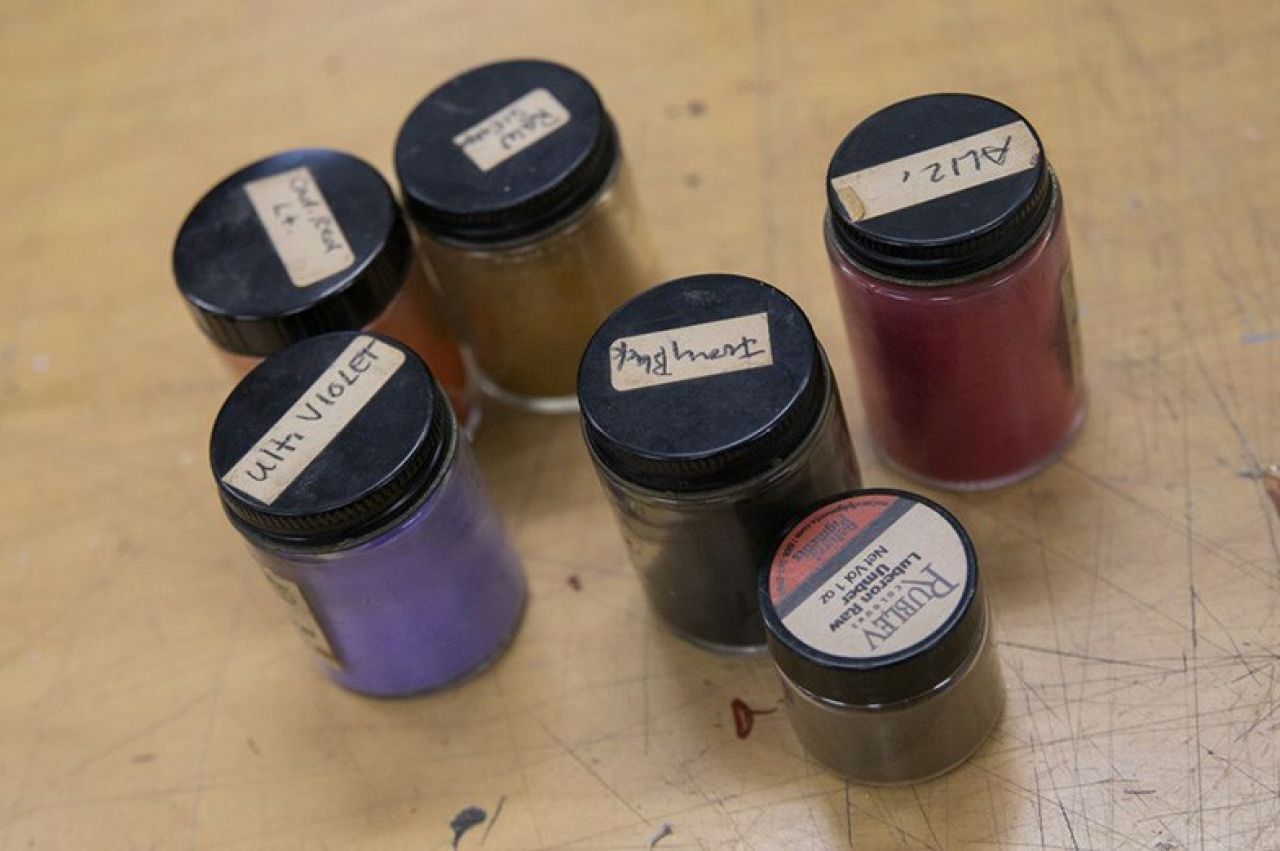February 21, 2022
McCune Bruhn’s pigment research aimed at improving online art experience

Heather McCune Bruhn, assistant teaching professor of art history, is part of a multidisciplinary team of researchers who received a seed grant from Penn State to research and develop technology that enhances art enthusiasts’ online interaction with visual art.
The team, which also includes Yi Yang, assistant professor of electrical engineering at Penn State, and Xuan Liu, associate professor of electrical and computer engineering at New Jersey Institute of Technology, was awarded just more than $22,000 for “Integrating Artificial Intelligence and Optical Coherent Tomography Data for Art Conservation Applications.”
The money was provided by the Penn State Institute for Computational and Data Sciences seed grant program, which helps researchers use the latest technology and cutting-edge science techniques to develop innovation across various disciplines.
Building on research conducted by Yang and Liu that created a new form of scanning technology that can read the layers of paintings, the team will use the seed grant to train the system to recognize a wide range of pigments, binders and mediums to eventually create a portable, art-specific tomography scanner.
“When scanning, not only can you identify the content of the layers, for example a pigment and the binder that the pigment is suspended in, but you can also see the layers on top of each other,” McCune Bruhn said. “We are hoping it can also tell the difference between various other materials, like varnish and dirt.”
The non-conventional partnership between an art historian and a team of engineers began in 2020 when Yang and Liu reached out to McCune Bruhn in hopes of broadening the potential for the scanner. The result has been a fruitful collaboration that crossed disciplines and connected institutions.
At Penn State, McCune Bruhn has been using money from the seed grant to work with paid interns on creating a library of paint colors using different mediums, such as acrylic and linseed oil. The researchers are using a wide range of pigments to test the system.
“The next step is to start layering two colors, one on top of the other, to see how well the system can recognize that,” McCune Bruhn said. “For example, to have a cadmium yellow on top of a cadmium red—does it just see the cadmium or can it tell that one of them is yellow and one of them is red?”
One of McCune Bruhn’s interns, Kayley McDonald, spent the fall 2021 semester making multiple samples of different greens. As a fourth-year history major, she has been learning on the go.
“I am not from the art world by any means,” McDonald said. “A lot of this stuff is foreign to me, but while doing this project it has become incredibly difficult to not appreciate the different colors and pigments around you.”
Yang, Liu and McCune Bruhn were also awarded a grant from the Institute of Museum and Library Services. They are using that money to look at ways to make paintings more accessible for the visually impaired, McCune Bruhn said.
“Our larger IMLS Grant is for taking this data and figuring out ways of visualizing it so that we can virtually ‘unpaint’ a painting and peel the layers down and then build it back up virtually,” McCune Bruhn said. “We are also looking at the 3D scans for people with visual impairments and there might be some other uses that we haven’t really explored, but the work is really about visualizing and using the data in different ways to improve museum visitors’ experiences.”
Written by: Mackenzie Daly
